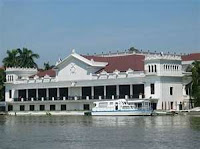Art. 426. Whenever by provision of the law, or an individual declaration, the expression "immovable things or property," or "movable things or property," is used, it shall be deemed to include, respectively, the things enumerated in Chapter 1 and Chapter 2.
Whenever the
word "muebles," or "furniture," is used alone, it
shall not
be deemed to include money, credits, commercial securities, stocks and
bonds, jewelry, scientific or artistic collections, books, medals,
arms,
clothing, horses or carriages and their accessories, grains, liquids
and
merchandise, or other things which do not have as their principal
object
the furnishing or ornamenting of a building, except where from the
context
of the law, or the individual declaration, the contrary clearly
appears.
Discussion:
The first paragraph of the article explains itself. Muebles is used synonymously with furniture. Note that furniture has generally for its principal object the furnishing or ornamenting of a building.






